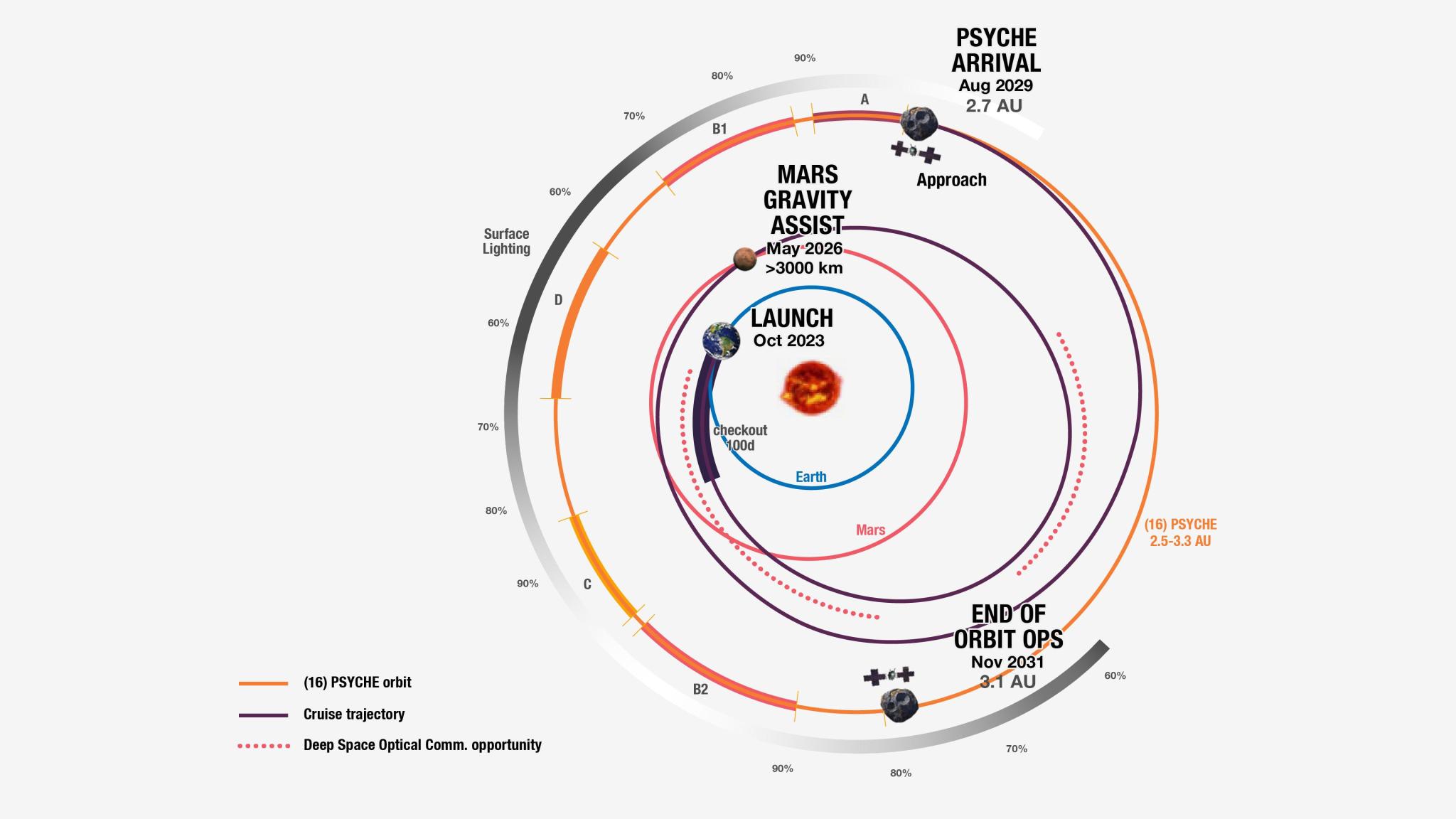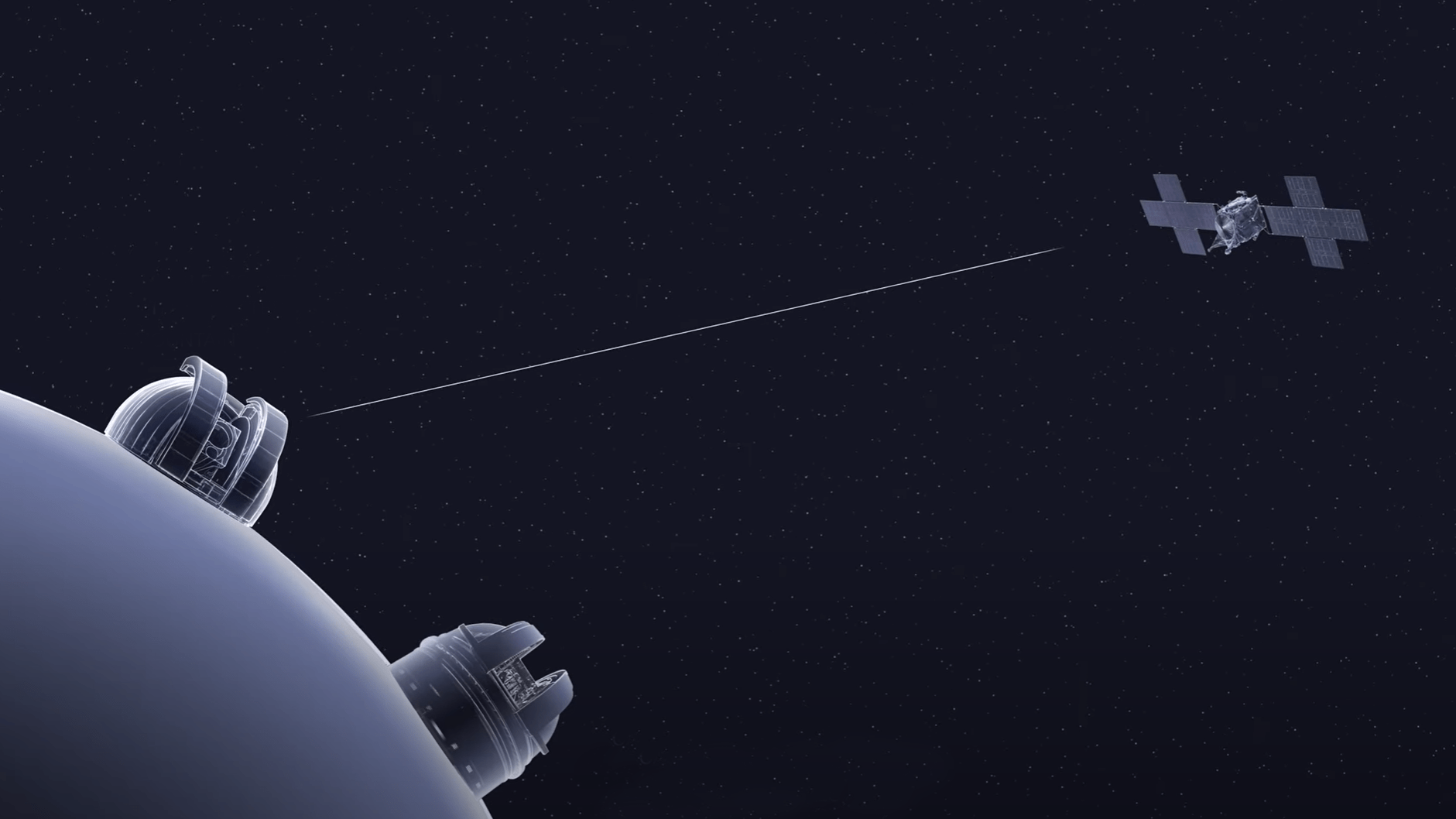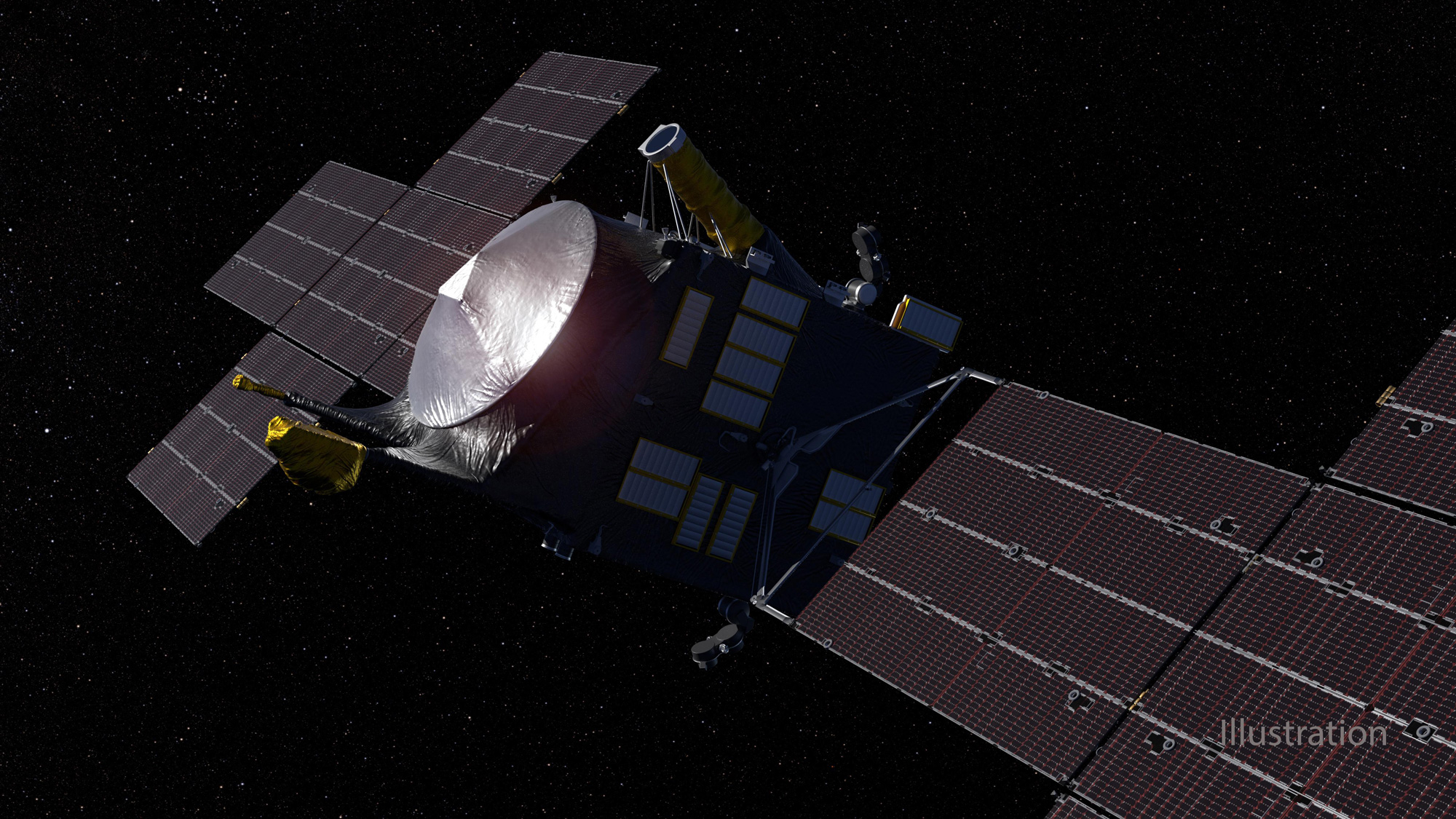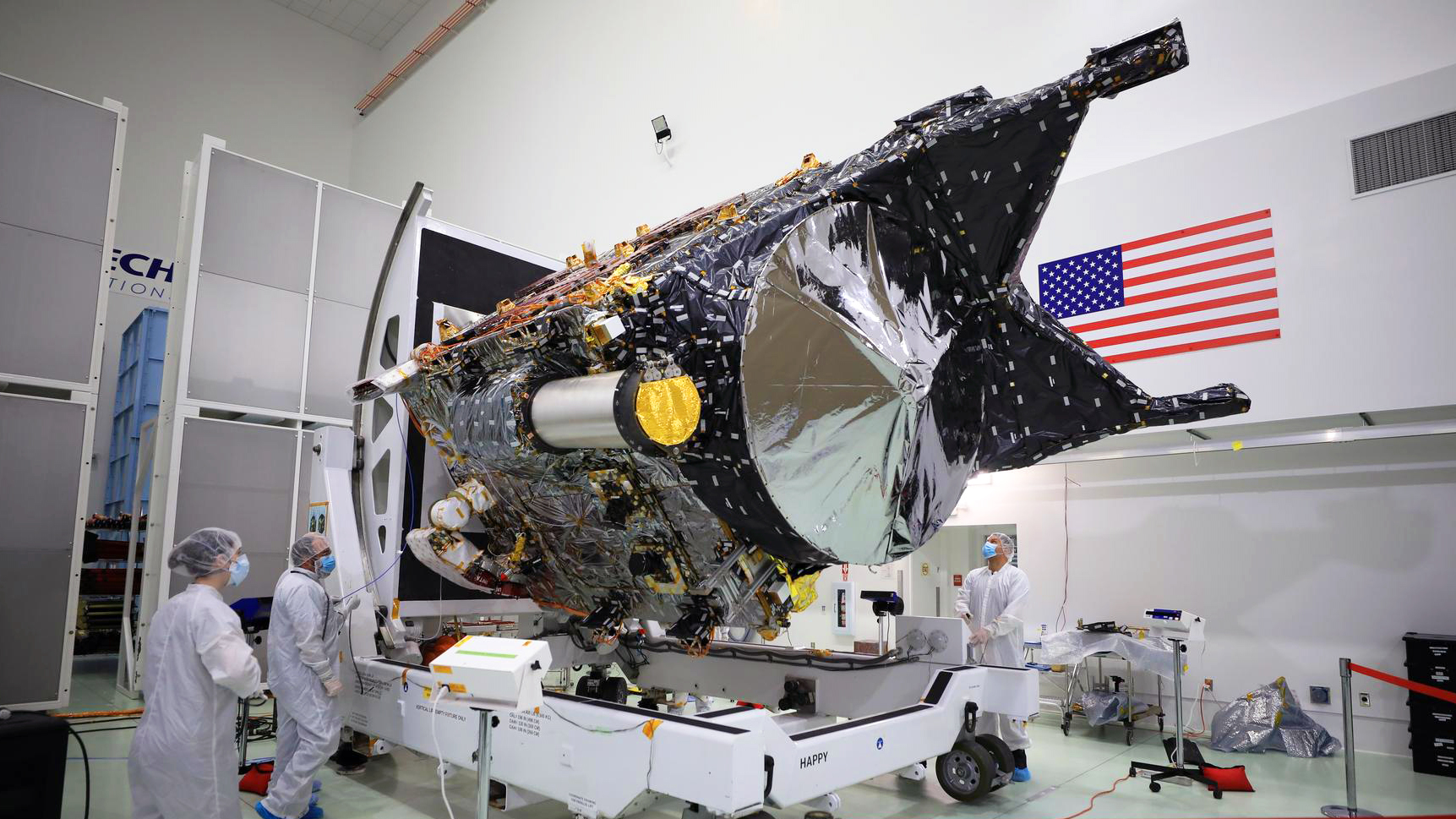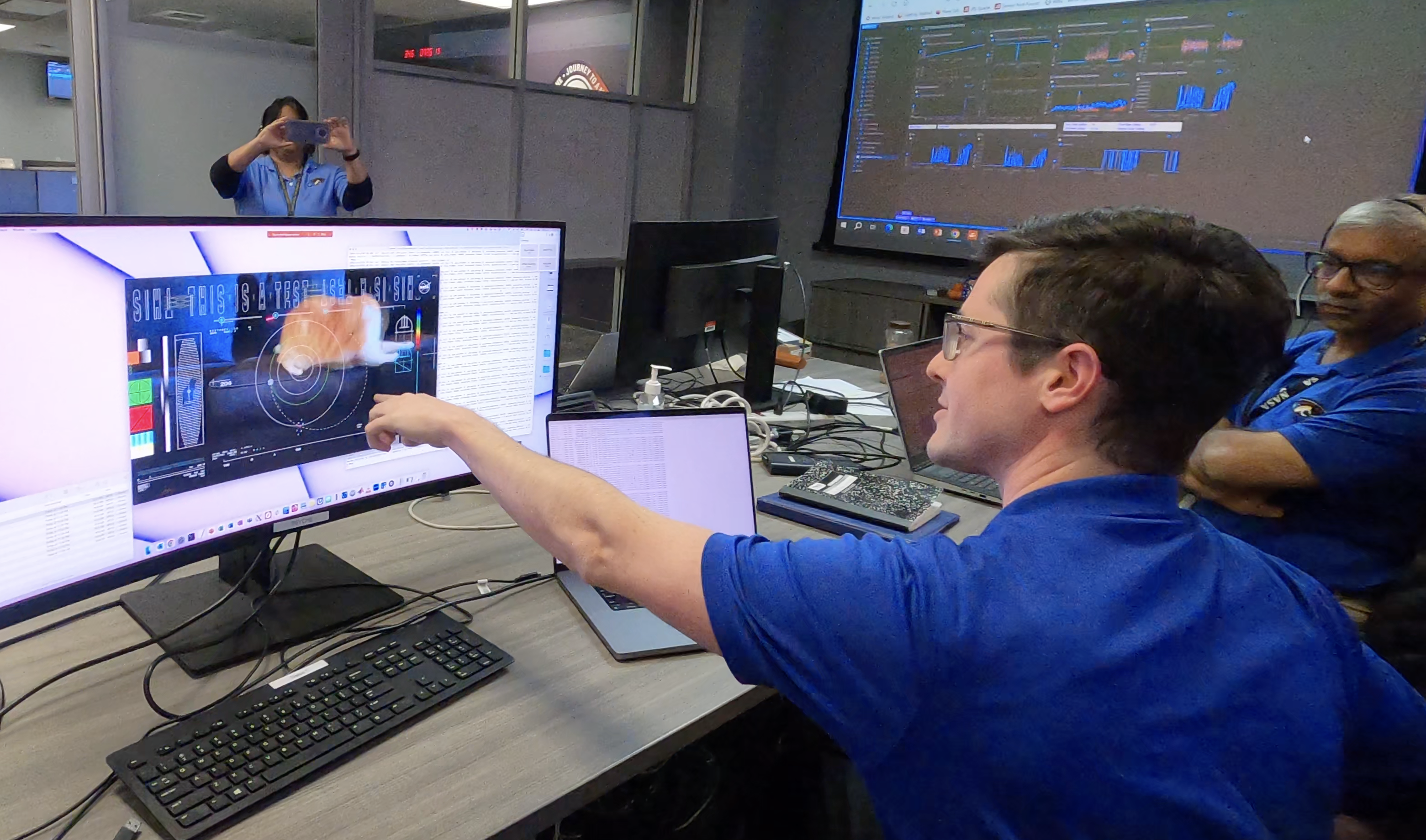Psyche
Mission to a Metal-Rich World
Psyche mission blog
how do we get there?
get involved

About the Psyche Spacecraft
With its solar arrays deployed, NASA’s Psyche spacecraft is big enough to almost cover a tennis court.
Psyche’s main computer, flight software, fault-protection systems, and most of the telecommunications systems come from NASA’s Jet Propulsion Laboratory (JPL) in Southern California. Attached to Psyche is the Deep Space Optical Communications (DSOC), a NASA experiment that will test optical, or laser, communications beyond the Moon.
Read More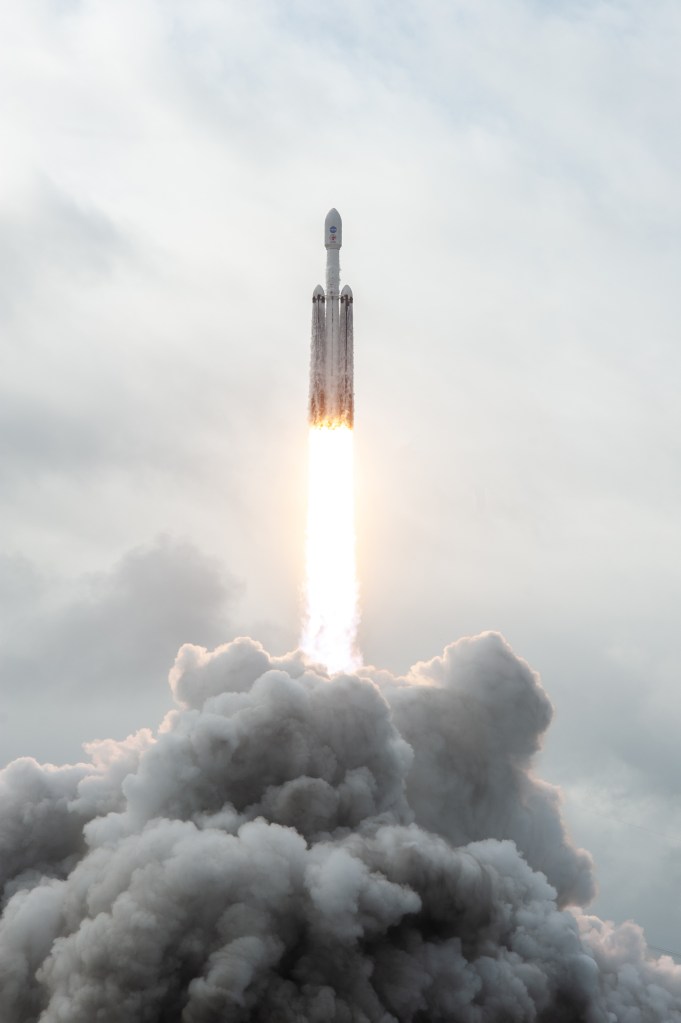
Goals & Objectives
Psyche is the first mission to explore an asteroid with a surface that contains substantial amounts of metal rather than rock or ice.
The mission will improve our knowledge of iron cores, a previously unexplored building block of planet formation.
Read More
Meet the Psyche Mission Team
Planning, building, launching, and operating a spacecraft takes lots of people.
The Psyche mission is only possible by drawing together resources and know-how from NASA, universities, and industry. The mission’s leader – Principal Investigator Lindy Elkins-Tanton – is based at Arizona State University (ASU) in Tempe.
Read More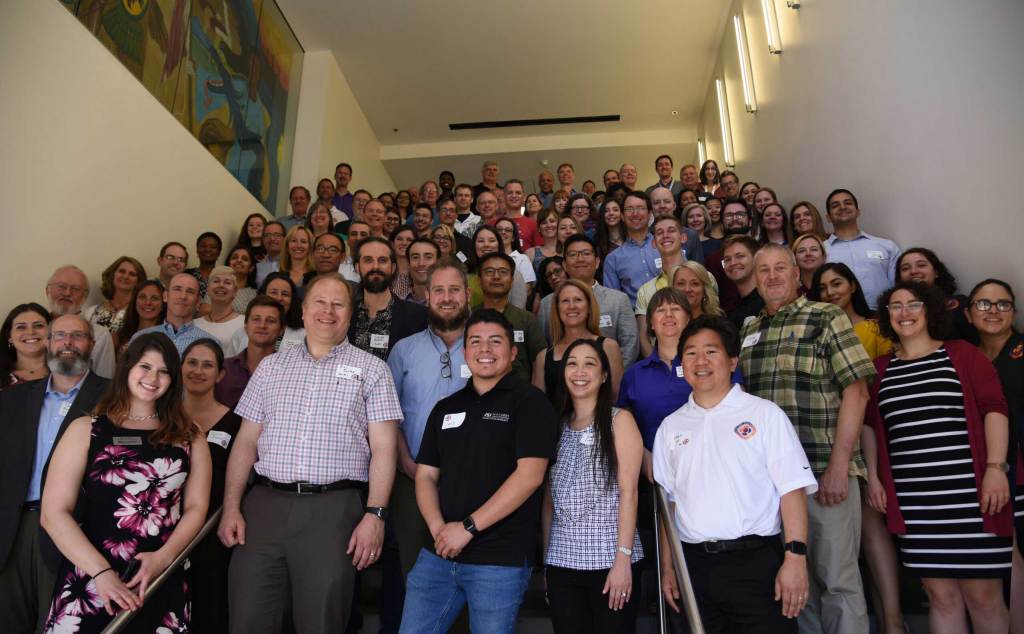
Ways to participate
Paper models, Psyche-inspired art, and free classes – check out all the ways to participate in the Psyche mission.
There are many ways to get involved with NASA and space exploration. NASA’s Psyche mission has opportunities for engaging everyone in the science, engineering, innovation, and communication of the mission.
Read More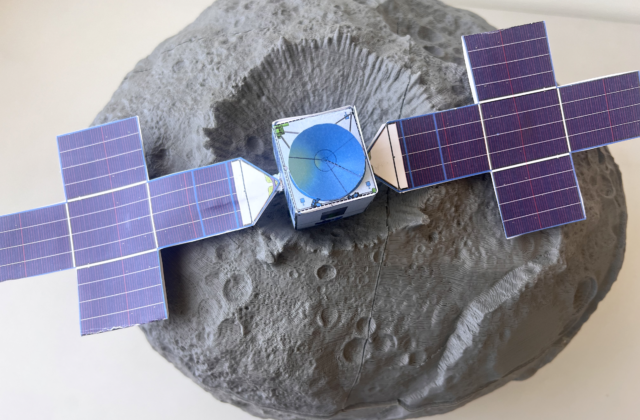
Overview
Psyche is a NASA mission to study a metal-rich asteroid with the same name, located in the main asteroid belt between Mars and Jupiter. This is NASA’s first mission to study an asteroid that has more metal than rock or ice.
Psyche launched Oct. 13, 2023, at 10:19 a.m. EDT from Kennedy Space Center. Psyche lifted off from Launch Pad 39A aboard a SpaceX Falcon Heavy rocket. (Psyche is the first in a series of NASA science missions to be the primary payloads launched on a SpaceX Falcon Heavy rocket.)
“We said ‘goodbye’ to our spacecraft, the center of so many work lives for so many years – thousands of people and a decade,” said Lindy Elkins-Tanton, Psyche principal investigator at Arizona State University in Tempe. “But it’s really not a finish line; it’s a starting line for the next marathon. Our spacecraft is off to meet our asteroid, and we’ll fill another gap in our knowledge – and color in another kind of world in our solar system.”
“Now the real fun begins, as we race toward asteroid Psyche to unlock the secrets of how planets form and evolve,” said Laurie Leshin, director of NASA’s Jet Propulsion Laboratory (JPL) in Southern California, which is responsible for the mission’s overall management, system engineering, integration and test, and mission operations.
The spacecraft separated from its rocket about an hour after launch, and around the 90-minute mark established two-way communication with NASA’s Deep Space Network complex in Canberra, Australia, at 11:50 a.m. EDT. Initial telemetry reported the spacecraft in good health.
“I am excited to see the treasure trove of science Psyche will unlock as NASA’s first mission to a metal world,” said Nicola Fox, associate administrator for the Science Mission Directorate at NASA Headquarters in Washington. “By studying asteroid Psyche, we hope to better understand our universe and our place in it, especially regarding the mysterious and impossible-to-reach metal core of our own home planet, Earth.”
Asteroid Psyche’s gravity will capture the spacecraft in late July 2029, and Psyche will begin its prime mission in August. It will spend about two years orbiting the asteroid to take pictures, map the surface, and collect data to determine Psyche’s composition.
The body of the Psyche spacecraft is about the size of a small van, and it’s powered by solar electric propulsion. It has a magnetometer, a gamma-ray and neutron spectrometer, and a multispectral imager to study asteroid Psyche. The spacecraft will start sending images to Earth as soon as it spots the asteroid.
Scientists think asteroid Psyche, which is about 173 miles (280 kilometers) at its widest point, could be part or all of the iron-rich core of a planetesimal, a building block of a rocky planet.
The asteroid also could also be something else. It could be the leftover piece of a completely different kind of iron-rich body that formed from metal-rich material somewhere in the solar system. Psyche may be able to show us how Earth’s core and the cores of the other terrestrial planets came to be.
The Journey to Asteroid Psyche
The Psyche spacecraft’s voyage to its namesake asteroid could (almost) be considered a journey to the center of the Earth. Asteroid Psyche might be an exposed core of a planetesimal, an early planetary building block. It might have been stripped of its outer layers by violent collisions during our solar system’s early formation.
If it is a planetesimal, asteroid Psyche may offer a close look at the interior of terrestrial planets like Earth. We can’t bore a path to Earth’s metal core – or the cores of the other rocky planets – so visiting Psyche could provide a one-of-a-kind window into the violent history of collisions and accumulation of matter that created planets like our own.
About Asteroid Psyche
Psyche was discovered in 1852 by Italian astronomer Annibale de Gasparis. Because it was the 16th asteroid to be discovered, it is sometimes referred to as 16 Psyche. It’s named for the goddess of the soul in ancient Greek mythology, often depicted as a butterfly-winged female figure.
Psyche orbits the Sun in the outer part of the main asteroid belt between Mars and Jupiter. It is approximately three times farther from the Sun than Earth. Because Psyche and Earth orbit at different speeds, the distance from Earth to Psyche varies from less than 186 million miles to more than 372 million miles.
Psyche is irregular and potato-like. If the asteroid were sliced in half horizontally at the equator – picture a squished oval – it would measure 173 miles (280 kilometers) across at its widest point and 144 miles (232 kilometers) long. Its surface area is 64,000 square miles (165,800 square kilometers).
Psyche is dense, estimated at about 212 to 256 pounds per cubic foot (3,400 to 4,100 kilograms per cubic meter). The surface gravity on Psyche is much less than it is on Earth – even less than it is on Earth’s Moon. On Psyche, lifting a car would feel like lifting a large dog.
Scientists think Psyche may consist of significant amounts of metal from the core of a planetesimal, one of the building blocks of our solar system. The asteroid is most likely a survivor of multiple violent hit-and-run collisions, common when the solar system was forming.
There are still contradictions in the data, but scientific analysis indicates that Psyche is likely made of a mixture of rock and metal, with metal composing 30% to 60% of its volume. The asteroid’s composition has been determined by radar observations and by the measurements of the asteroid’s thermal inertia (how quickly an object gains or re-radiates heat).
By combining radar and optical observations, scientists have generated a 3D model of Psyche that shows evidence of two craterlike depressions. It suggests that there is significant variation in the metal content and color of the asteroid over its surface. But until this mission sees the asteroid Psyche up close for the first time, we don’t know what it actually looks like.

























